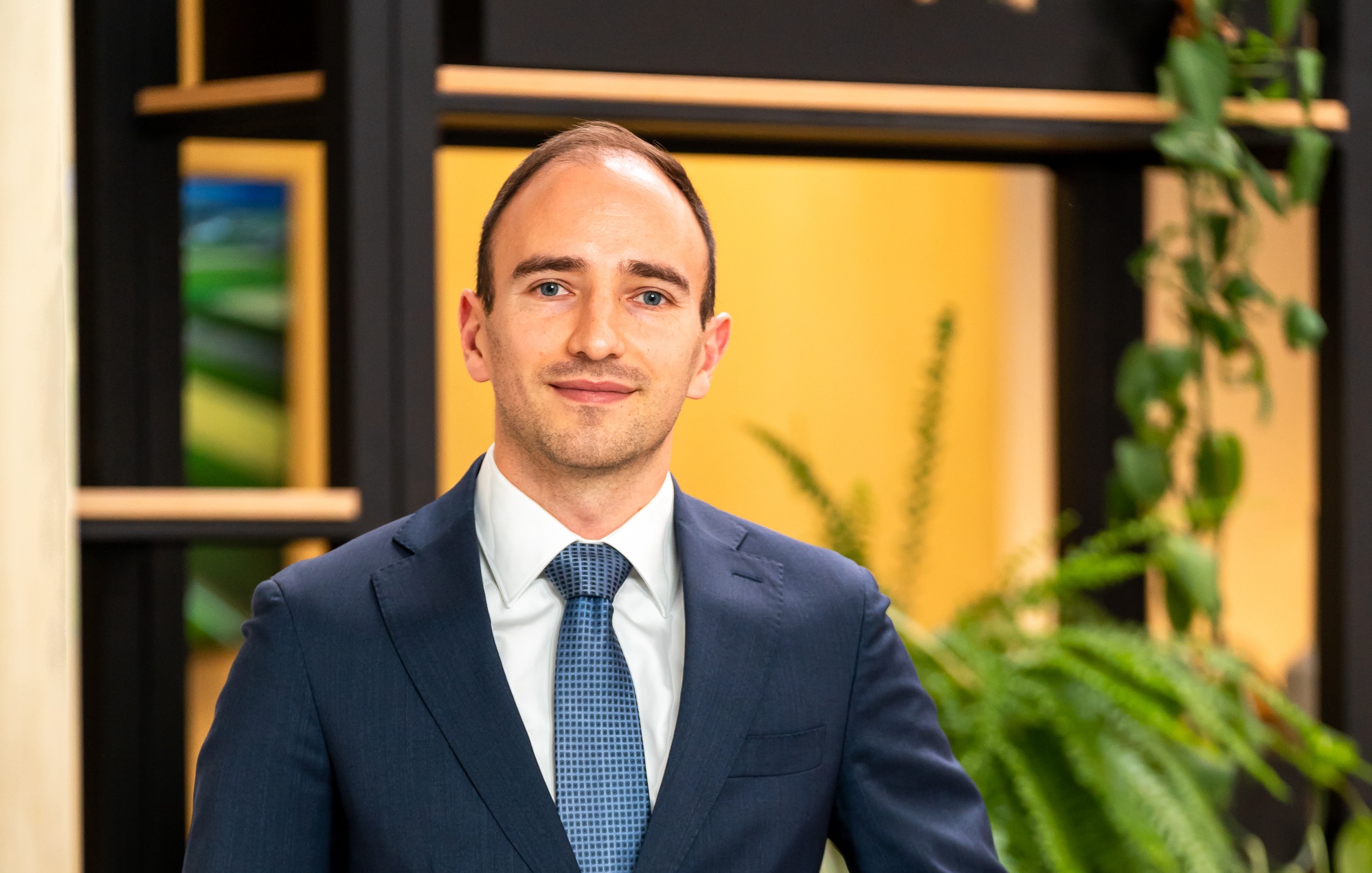DÉNES LACZKÓ: THE DEVELOPMENT OF LIVESTOCK FARMING WILL ALSO BRING NEW FEED REQUIREMENTS
There is significant potential in the Central and Eastern European region in agribusiness, and Hungary can play a central role in the development, UBM’s executives pointed out in a recent article published by Index.hu. We have also received questions from readers about the article, and this time we would like to answer them. We talked to Dénes Laczkó, Managing Director of UBM Feed Romania, about macro-economic factors, favourable business opportunities, and professional background.
Dénes Laczkó studied at the Faculty of Economics and Business Administration of the Babes-Bólyai University in Cluj-Napoca between 2007 and 2012. During his Master’s degree, he started working for a car parts trading company of national importance in the sector, where he reached his first management position after six months. Five years later, he moved to the agribusiness, where he was first involved in the development of a grain trading company (East Grain), and in 2016 he started his activities in the feed sector with the foundation of UBM Feed Romania. The latter involved a greenfield investment in a local factory, followed by the building of the company’s activities and its introduction to the market. Dénes also works as CEO of Poultry Investment and as Vice President of the National Association of Combined Feed Manufacturers, and is also active in talent management, running the Agro Consulting Club, a professional college founded by him 5 years ago at the University of Agricultural Sciences and Veterinary Medicine in Cluj-Napoca.
What are the similarities and differences between the Hungarian and Romanian markets?
Dénes Laczkó: The Romanian feed market differs from the Hungarian market mainly in terms of size and capabilities. The feed market of Romania, which is almost three times the size in terms of area and twice the size in terms of population of Hungary, is only 2.8 m tonnes compared to the 3.6 m tonnes of the Hungarian market. This difference mainly reflects the level of development of the livestock farming sector: Romania imports almost 70% of its pig meat consumption, 10% of its poultry meat consumption and 50% of its milk consumption. In parallel, the country is one of Europe’s major cereal powers (typically first or second in maize production, fourth in wheat and first in sunflower seeds), but a significant part of the cereals produced is exported as raw materials.
In almost all areas of livestock farming, we see major moves and developments, with Romania likely to be one of the new destinations for production capacity moving from Western Europe to Eastern regions in the coming years. I believe that this process offers us significant opportunities, as the development of livestock farming will also bring new feed requirements.
The Romanian feed market is much more fragmented than the Hungarian one in terms of market actors, with fewer multinationals, and we are probably also facing a strong consolidation process, in which we intend to be winners.
What are the specificities of UBM’s technology, what innovative solutions do you use that could give you a competitive advantage in the Romanian market?
DL: Within a short time of entering the Romanian market, UBM has earned the title of premium feed company. From the beginning, our market strategy was to produce high-quality ready-made feeds, for which we were the first Romanian player to introduce a high-level feed and farm management consulting service. The combination of state-of-the-art technology, Hungarian know-how and a motivated and dynamic team proved to be a good recipe in the market. We also set a national record in broiler breeding, our articles are widely published in trade journals and the biggest (integrated) players often use our products as benchmarks to monitor their own feed production.
What challenges did you face when setting up the Kerelőszentpál factory? What solutions were found?
DL: When we launched the factor 5 years ago, we faced challenges in all areas: organising the raw material and finished product logistics of a 30 tonne per hour capacity, making the greenfield factory capable of producing all types of ready-made feeds to a high-quality standard and building up the market and other support activities (finance, controlling, quality management) was a major challenge and an inspiring opportunity. Of our current team of 47 people, only 2 had previous experience in the feed industry, but over the years we have shown that a positive, motivated and constructive attitude, as well as dedicated, humble and persistent work, can often mean more than any experience.
How can the integration of artificial intelligence into production contribute to development in the future?
DL: We are actively working on integrating AI into production. During the manufacturing process, a large amount of data is generated, which can be used to significantly optimise our operation. While our current industry knowledge and technology solutions give us a competitive advantage, to maintain that in the coming years, we will also need to gain an advantage in new areas such as AI.
If you have any questions, please do not hesitate to contact us at investors@ubm.hu.




